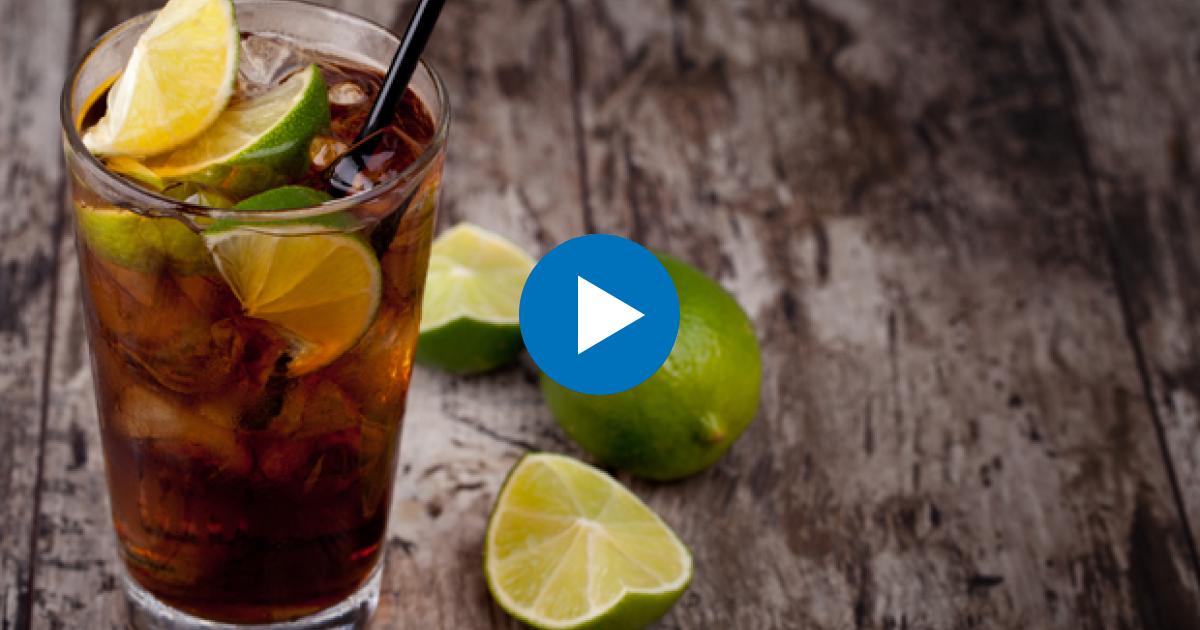
Who isn't in the mood for a delicious mojito at all times? Who hasn't traveled to Cuba and in less than 24 hours is already tasting the exquisite drinks that make up the refreshing Cuban cocktail scene, which, like the island itself, is a colorful, sweet, and diverse mix?
Here we leave you three of the signature cocktails of the largest of the Antilles, their histories and their traditional preparation methods. Enjoy!
1. Mojito: The well-deserved fame of this cocktail comes from about 70 years ago, thanks to Nobel Prize winner in Literature Ernest Hemingway, who was a regular visitor to the famous Cuban restaurant La Bodeguita del Medio during the 1940s and 1950s, where this refreshing drink was typically served.
Since then, his phrase came to life: “My mojito in La Bodeguita, My daiquiri in El Floridita,” which promoted the internationalization of the Mojito and its positioning as one of the most delicious and essential cocktails for foreigners visiting Cuba.
La Bodeguita del Medio, a typical creole restaurant, is known worldwide as one of the most emblematic places on the island. There, according to connoisseurs and lovers of Cuban rum, they prepare the best Mojito in the world based on Cuban rum Havana Club Silver Dry, a white and dry rum created for cocktails, which, unlike aged rums, does not alter the flavor and allows the herbs and lime to be fully appreciated on the palate.
The perfect preparation of this drink, ideal for enduring the intense heat characteristic of Cuba's climate, is made with the following ingredients:
-2 ounces (60 ml) of rum (Havana Club Silver Dry).
-juice of half a lime.
-1 sprig of spearmint, a plant that differs from the European variety with the same name (mint) but that, over the years and due to confusion, the mojito is prepared in many places with different types of mint.
-2 teaspoons of white sugar.
-4 ice cubes.
-2 ounces of seltzer water or soda.
-1 lemon slice for decoration or a sprig of mint.
-Optionally, a few drops of Angostura to enhance the flavor of the ingredients.
2. Daiquiri: Its origins date back to the early years of the last century in the sunny east of the country and it stands out as a mix of equal parts white rum Havana Club Silver Dry (traditional preparation) and fresh lime or key lime juice. Although many variations of this drink exist, experts in Cuban mixology assure that the world-famous one is made by El Floridita.
This recipe is delicious with white rum, preferably Havana Club Silver Dry, the juice of one lemon, two tablespoons of white sugar, and some ice cubes. All the ingredients are blended for about 30 seconds, to make it frappé and ensure the rest of the ingredients are well mixed.
Among the theories that support the origin of this drink, the one that stands out points to its emergence near the homonymous beach of Santiago de Cuba, where there was a well-known iron mine.
The cocktail is said to have been created by an American engineer working there, Jennings Cox, who, when the gin ran out and he had nothing to offer his guests from his country, ended up improvising. Since rum by itself is very strong for the tropical climate, the American added the rest of the ingredients to make it more palatable and refreshing.
According to some experts, it was an Italian mining engineer and colleague of Cox, Giacomo Pagliuchi, who was then a captain in the Liberation Army, who took it upon himself to name it Daiquirí.
It was not until 1909 that the drink became famous among the U.S. Navy troops when Admiral Lucius W. Johnson, the medical officer of the military institution, introduced it at the Army and Navy Club in Washington, DC. Ultimately, it gained popularity thanks to Hemingway.
3. Cuba Libre: Although the exact date when rum was combined with cola cannot be precisely determined, experts believe it occurred around 1899 (when sufficient refined or light rum was already being consumed in Cuba) or in the early years of the 20th century, when Coca-Cola as a valued and refreshing product had already established itself in the country.
Coca-Cola, the invention of American pharmacist John Pemberton in 1885, became famous just one year after its creation, and by 1899 it began to be sold in Cuba, although some historians do not rule out the possibility of a massive entry of the soda as a result of the American military intervention in the Spanish-Cuban war.
As a curious fact, the largest of the Antilles was, along with Panama, the first country outside the U.S. where the first Coca Cola bottling plants were built, in 1906.
Its original preparation is done in a Highball glass or 8-ounce Delmonico glass filled with ice cubes, one ounce of white rum is added, and it is topped with cola; in most cases, a few drops of fresh lemon juice are usually added or a piece or slice is incorporated inside.
Cover image taken from: www.bottlemart.com.au
Information about the traditional preparation of cocktails: Excelencias Magazine
What do you think?
COMMENTFiled under: